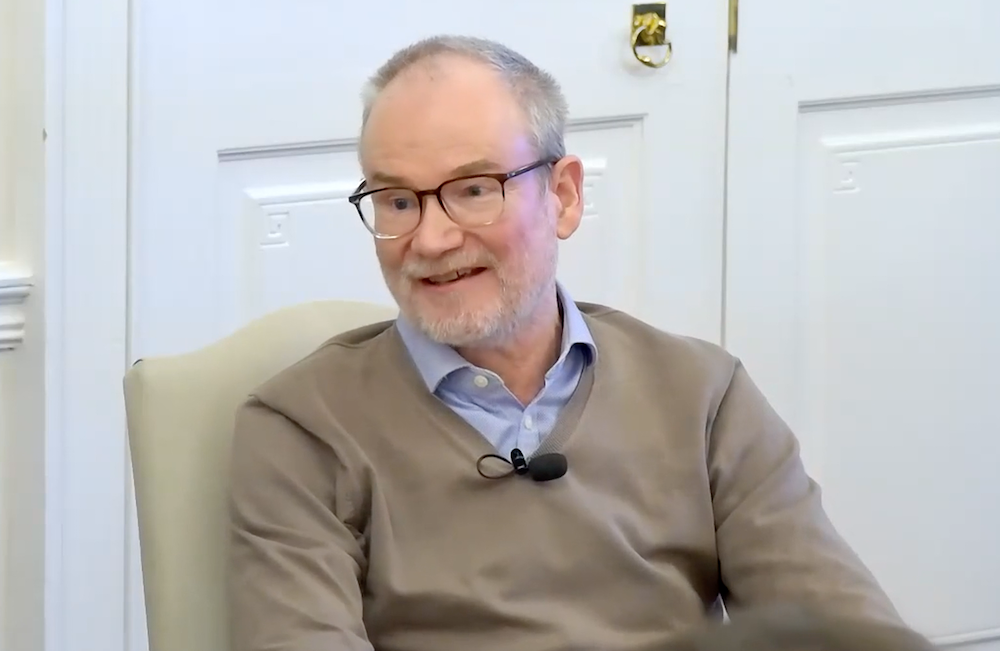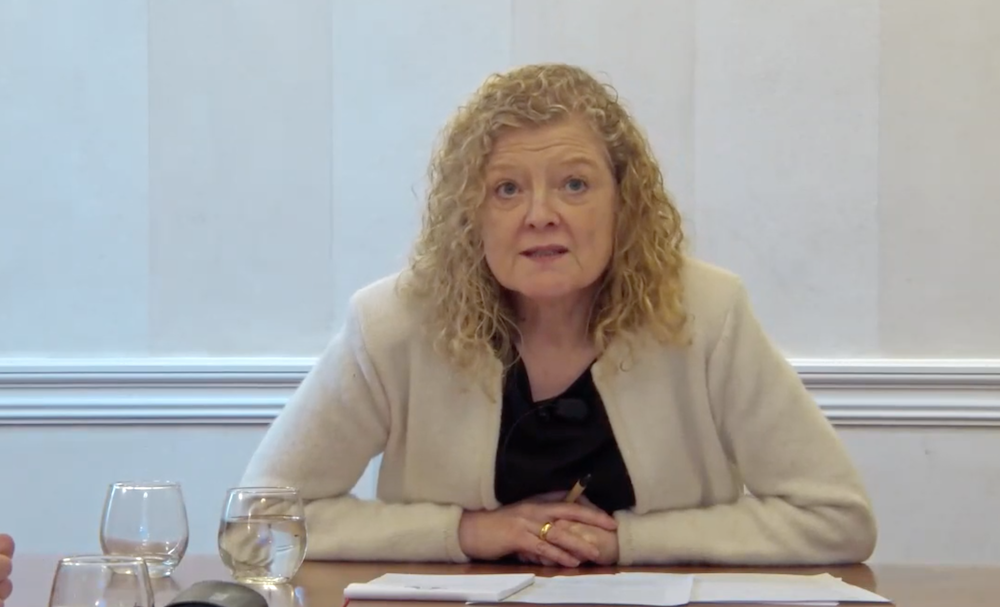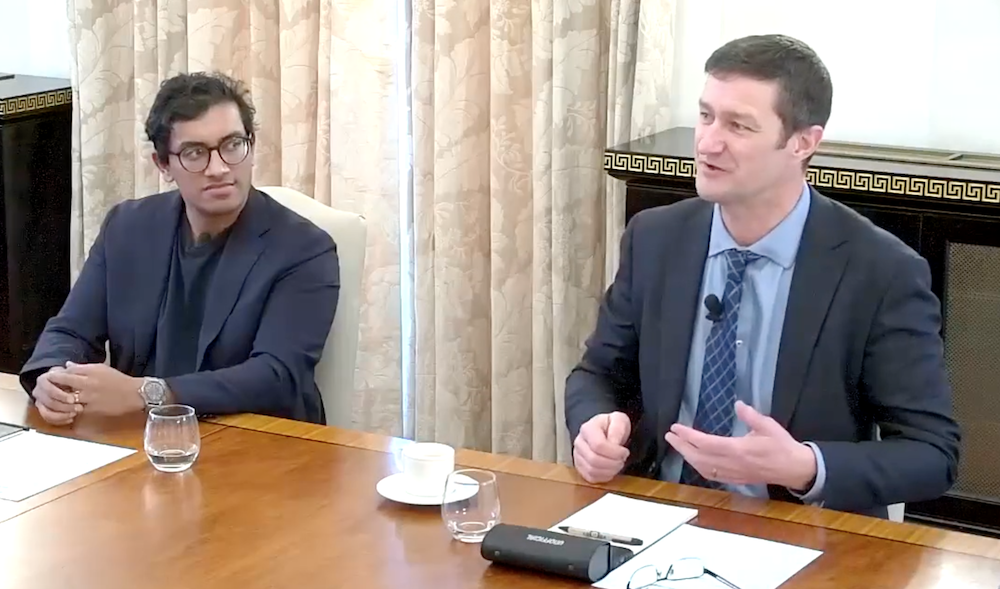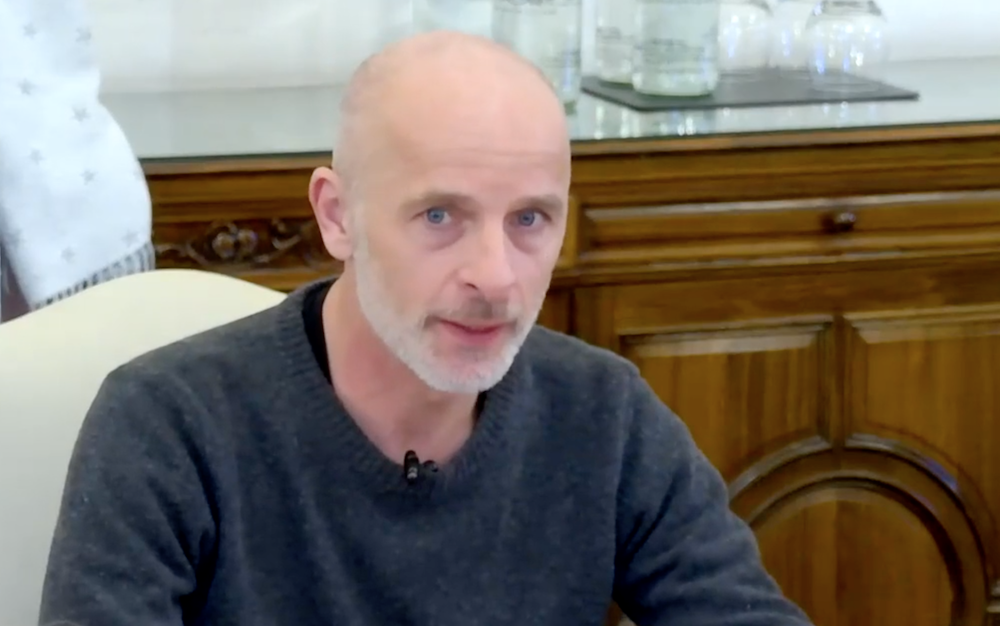Healthcare / Digital health, data and privacy
Future Health 2050: Healthcare in a digital world – “it’s all up for grabs”
By Andrew Sansom | 20 Feb 2024 | 0
Digital healthcare is a juggernaut that can’t be stopped, but with so many gaps needing to be addressed – including, among others, digital skills; funding and investment; estate infrastructure; and privacy and governance – how do we go about managing the many risks that this new model of care presents and capitalise on the myriad opportunities it offers?
These were some of the questions debated last week at an expert roundtable, organised by European Healthcare Design as part of its ‘Future Health 2050 series’ and supported by Lexica. Watch the full roundtable here.
Hosted at the King’s Fund, London, from where the webinar was live-streamed via SALUS TV, the panel began with Professor James Barlow, chair in technology and innovation management at Imperial College London Business School, providing an overview of what digital transformation means for healthcare and how we should consider its potential impact on patient care and outcomes.
He described digital health transformation as about re-imagining business and service models, enhancing business processes, and improving patient experiences – underpinned by new digital technologies and innovations. The power of these technologies, he added, can be elevated by combining systems with data analytics, including artificial intelligence (AI), enabling new ways of thinking about care delivery, feeding into business cases, and so on. 
In regard to impact, digital health will reinforce some of the ongoing trends in healthcare, such as preventive health, patient-centred care, greater integration, and care closer to the community. In the longer term, however, he warned there is a greater unknown, particularly about the role of the global tech giants in reshaping health systems and the way we think about healthcare.
Looking ahead to 2050, he said: “I think we’re going to see a mix of new entrants and incumbents coming together in new ways, creating new ecosystems for particular aspects of healthcare, whether it’s wellbeing, prevention, acute care. It’s all up for grabs.”
Mind the gap
Chair Tina Nolan, managing director at Lexica, began by asking the panel where the challenges lay form a people perspective, particularly in regard to digital skills, and funding to improve those skills.
The first problem to fix is usability, said Simon Bolton, a non-executive director, advisor, and former chief executive of NHS Digital. “When I spent time with people in clinical environments, the single biggest complaint I got was why do I have a different password for every different system?”, he recalled. “Those hygiene problems are absolutely huge, and I’d put them in front of some of the skills piece, because we should be designing these solutions so they’re easy to use, whatever your level of knowledge or capability.”
Barlow added that there was also a “time and bandwidth gap” to implement change, with people suffering from “innovation fatigue”.
Fiona Daly, national deputy director of estates at NHS England, agreed there is a need to invest in digital skills but challenged the NHS mindset that “we need training for everything”. Eamonn Gorman, head of clinical informatics at the New Hospital Programme, stressed the existence of a skills gap at both ends. He pointed out many of the NHS’s systems are keyboard-based, Windows-type, software solutions, and younger staff are more used to touch screens.
 And Kevin Sureshkumar, director of Spanswick, a digital hospital design consultancy, emphasised the importance of digital inclusion and health inequalities, adding “we need to be conscious of that and also design our digital services in a digital-first but not digital-only manner”.
And Kevin Sureshkumar, director of Spanswick, a digital hospital design consultancy, emphasised the importance of digital inclusion and health inequalities, adding “we need to be conscious of that and also design our digital services in a digital-first but not digital-only manner”.
This led on to a discussion around the challenges of different parts of the health system – for example, acute care, primary care, patients in their own homes receiving care – being at different stages of development and experiencing different levels of investment.
Bolton argued that the centre has a vital role to help the healthcare system both consolidate and standardise. “The centre should be trying to get the system to consolidate onto maybe three or four different electronic patient record systems so that our clinicians can build up the skills and knowledge on those systems,” he said.
Barlow agreed that there is a need for a central entity to set the boundary conditions for the whole system but felt that the centre in the UK – as well as in some other countries – “had been hollowed out, to some extent”.
For Sureshkumar, the challenge is that everyone has a different definition of digital. “One person thinks of digital as a purely IT service,” he said. “One person might see it as qualifications. It’s something else to someone else. Everyone in the room has a stake in digital and in making the digital strategy successful. And that’s what our challenge is.”
Data use and governance
Governance issues, including GDPR and other regulations, are also an obstacle – and another area where the centre has a role to enable wider use of data. 
Daly expressed how frustrating it was that her phone app seems to know more about her health and habits than anybody else, including her GP, but there is no way to integrate what she knows about herself into her own healthcare.
“We could, as citizens, be much more engaged in our own care pathways,” she said, “and that could address a lot of the avoidance of necessary illnesses and medication down the line, help drive the sustainability agenda, and also open up people’s health a lot more.”
Both Gorman and Bolton felt that we need to find a way through the regulatory quagmire. Said Bolton: “There is a role for the centre to make that happen and to start to have a proper open dialogue with citizens about how the data should and shouldn’t be used and provide the technology to allow citizens to make choices about how the data might be used.”
Nolan suggested that data is at its most powerful when seen across whole populations and population health. Given this assertion, she asked the panel whether there would be hospital and healthcare-based command centres at a whole-system level rather than an individual provider level.
 Once again, Sureshkumar highlighted the definition challenges, observing that some command centres operate in a conventional fashion, others aim to incorporate large data sets and marry data across the built environment to improve services, and others could tie in with digital twins and predict flow and demand to prevent problems before they arise.
Once again, Sureshkumar highlighted the definition challenges, observing that some command centres operate in a conventional fashion, others aim to incorporate large data sets and marry data across the built environment to improve services, and others could tie in with digital twins and predict flow and demand to prevent problems before they arise.
Integrated approach
Moreover, with myriad issues about the teams involved, how command centres might be arranged, and how data is collected, aggregated and used, Sureshkumar questioned whether command centres would be designed so that estates professionals work side by side with clinicians and colleagues in operations.
Daly felt this approach was correct, as it aligns well with strategies around integrated care and whole-system models, and the New Hospital Programme offers a real opportunity to create that model.
While he felt the idea of large, centralised control centres is an inherently good one, Gorman suggested this might not be entirely straightforward.
“You’re always going to need a degree of local management,” he said. “So, if the data is all going into that ICS control centre, that call becomes much easier. But it’s a process and I don’t believe you can go from where we are to where we want to go without the middle step. So, I think all these hospitals will need to have control centres and it’s also to bring things that currently don’t sit in that environment, like estates and facilities management in, so they’re sitting beside the clinicians as full partners.”
Daly pointed out that NHS England is working in this space, looking to standardise commercial frameworks and improve the approach to set the standards it expects. 
A brave new world
Concluding the main roundtable discussion prior to delegate questions, Nolan asked the panel whether we’re at risk of too much digital change, to which the consensus was that it’s inevitable and healthcare has to adapt to this new world.
Bolton asserted that the missing links were continued investment and leadership, adding that he wants to see a description of how we expect to be using technology in healthcare in the future and a long-term financial plan to ensure it happens.
Sureshkumar agreed on the investment issue but also highlighted what he called the “lumpy nature of funding” – the state of it being either famine or feast. “In the backdrop of that,” he warned, “it’s really difficult to attract talent and retain talent. So that certainly must change.”
Barlow felt that the key challenge is how to deal with “the disconnect in timescales between all the digital and other innovations that are happening very fast, and services, which change more slowly, and built infrastructure, which is very slow to change. And the policy cycle, of course, which is pretty rapid.”
And Daly and Gorman brought things full circle to focus back on the people question – both patients and the workforce.
Said Daly: “I think we just need to figure out how we take the very best frameworks and standards and implement that for the benefit of the patient. We should never lose sight of that – not tech for tech’s sake but, actually, tech for some kind of output.”
Gorman argued that what staff are tired of is not digital change itself but programmes that fail to deliver the benefits attributed at the outset and programmes that aren’t focused on delivering the actual benefits needed.
“If we get those right, then the pace of change will follow suit,” he said. “If we get them wrong, then we’re going to have a disaffected workforce.”
Organisations involved



